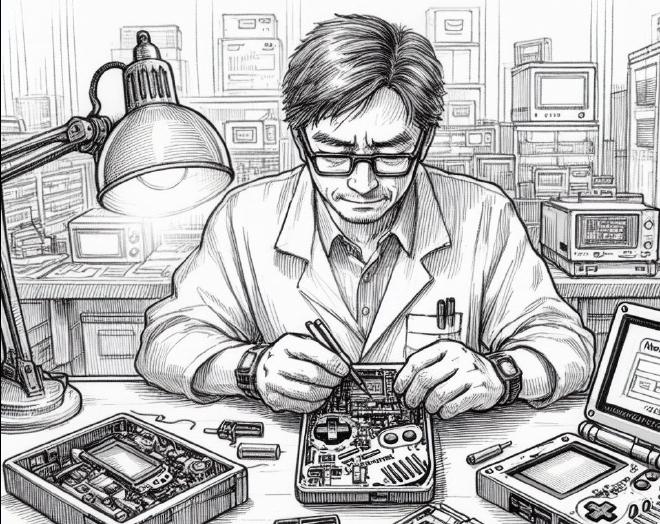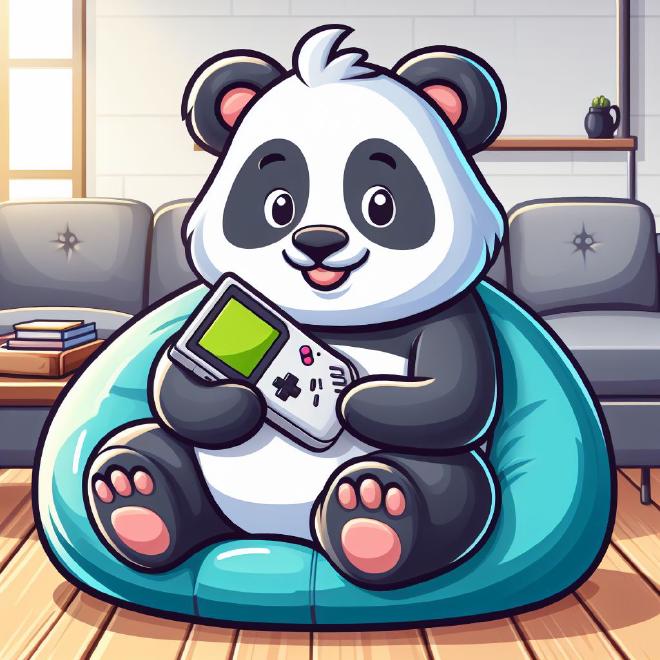Nintendo's Game Boy

Table of Contents
Nintendo - This article is part of a series.
As a dedicated gamer, my journey through gaming history brings me to the humble beginnings of handheld gaming—the era of Nintendo’s Game Boy. Let’s dive into the key moments that shaped the birth, launch, and enduring impact of this iconic handheld console.
Early Beginnings #
Back in the late ’80s, portable gaming wasn’t a groundbreaking idea, but Nintendo’s Game Boy took it to a whole new level. Crafted to be the ultimate companion for gamers, its creators aimed to build a device that could provide extended gameplay on a single battery charge. The outcome? A compact marvel featuring a 16-color backlit LCD screen and a built-in speaker, setting a fresh standard for handheld gaming.
Design and Features #
The Game Boy’s design was a departure from its bulkier predecessors. Its compact size, lightweight construction, and long-lasting battery made it a practical choice for gaming on the go. The introduction of the “D-pad” controller layout allowed for precise movements, elevating the gaming experience. With a built-in speaker and volume control, it offered an immersive audio-visual journey.

Global Impact #
Making its debut in 1989, the Game Boy swiftly captured the spotlight in the burgeoning handheld gaming market. Its triumph wasn’t limited to mere sales figures; it evolved into a cultural phenomenon. Boasting over 118 million units sold worldwide, it secured its place as one of the highest-selling consoles ever. This triumph triggered a transformation in the gaming landscape, sparking inspiration among competitors and shaping the course of the modern handheld console market.
Legacy and Influence #
Beyond its gaming realm, the Game Boy’s influence transcended into art, design, and technology. Its minimalist aesthetic and groundbreaking controller layout left an unforgettable imprint, shaping subsequent gaming devices. As we gaze into the future, the Game Boy’s legacy lives on, kindling the imagination of a new generation of gamers and developers, a testament to the enduring influence of its innovative design.
Retro Gaming Communities #
The lasting charm of the Game Boy owes a lot to the lively retro gaming community. Devotees have created online forums, arranged meetups, and even designed their own merchandise, showcasing an unyielding love for this iconic console. The aftermarket for Game Boy-related items, covering hardware, games, and merchandise, is thriving, offering collectors a diverse range of choices to enhance their collections.

Technical Specifications #
Released in 1989, the Game Boy boasted a 16-bit CPU, 128 KB of RAM, and a black-and-white LCD display with a resolution of 160x240 pixels. Sporting an impressive battery life of approximately 15 hours, it ran games through cartridges, each packing up to 128 KB of data (for reference, the image of the Panda above is 156 KB!).
Gameboy #
In summary, Nintendo’s Game Boy stands as a milestone in the gaming evolution. Its groundbreaking design, portability, and widespread appeal laid the groundwork for modern handheld gaming. As we honor its legacy, we acknowledge the Game Boy not just as a gaming device but as a catalyst that transformed the way we play and perceive games.